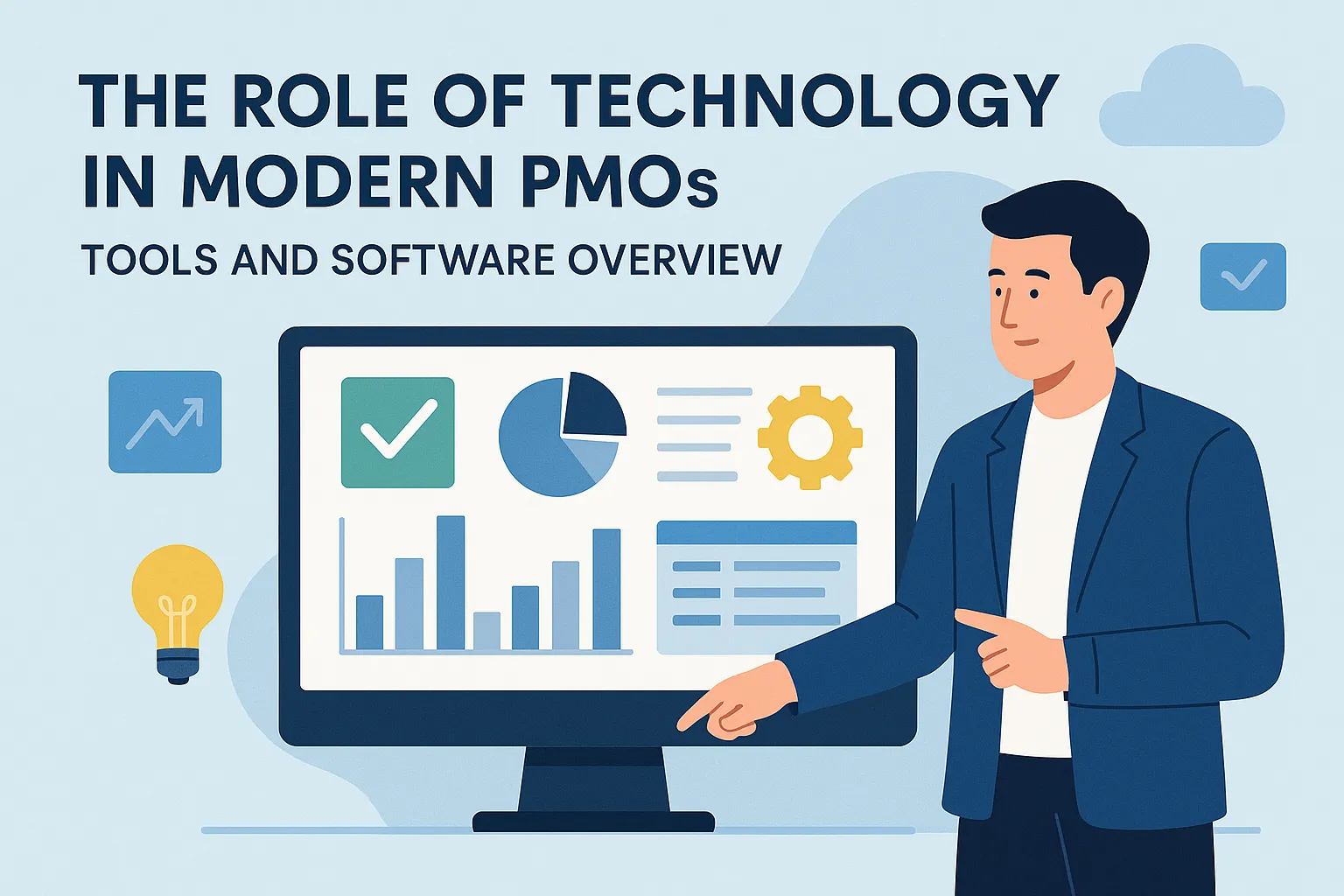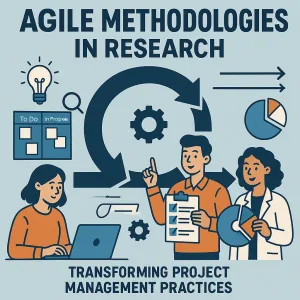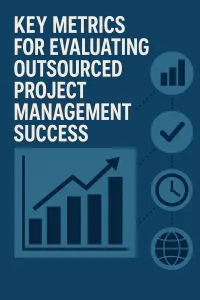Introduction to PMO
The Project Management Office (PMO) plays a pivotal role in ensuring that projects are executed efficiently and effectively. Understanding what a PMO is and its significance can greatly enhance the success of project initiatives within an organization.
Definition of PMO
A Project Management Office (PMO) is a centralized unit within an organization that oversees project management practices, ensuring that projects align with the strategic goals of the business. PMOs can vary in structure and function, typically categorized into three main types:
- Supportive PMO: This type provides support through best practices, training, and access to information. It acts as a consultant to project managers, offering guidance and resources without direct control over projects.
- Controlling PMO: A controlling PMO enforces compliance to project management standards and methodologies. It requires project managers to adhere to specific processes and may involve oversight of project performance.
- Directive PMO: This type takes a more hands-on approach, directly managing projects and ensuring that they are executed according to the organization’s standards. It has the authority to allocate resources and make decisions regarding project direction.
Importance of PMOs in Project Management Frameworks
PMOs are crucial in modern project management frameworks for several reasons:
- Alignment with Business Strategy: PMOs ensure that all projects are aligned with the organization’s strategic objectives, facilitating better resource allocation and prioritization of initiatives.
- Standardization of Processes: By establishing standardized project management practices, PMOs help to improve consistency and efficiency across projects, reducing the risk of failure.
- Enhanced Communication: PMOs serve as a communication hub, fostering collaboration among project teams and stakeholders, which is essential for project success.
- Performance Monitoring: They provide oversight and monitoring of project performance, enabling organizations to track progress, identify issues early, and implement corrective actions as needed.
Overview of PMO Functions and Responsibilities
The functions and responsibilities of a PMO can vary based on its type and the specific needs of the organization, but generally include:
- Project Governance: Establishing frameworks for project oversight, ensuring compliance with organizational policies and standards.
- Resource Management: Managing and allocating resources across projects to optimize efficiency and effectiveness.
- Training and Development: Providing training and development opportunities for project managers and teams to enhance their skills and knowledge.
- Reporting and Analytics: Collecting and analyzing project data to provide insights into performance, risks, and opportunities for improvement.
- Stakeholder Engagement: Engaging with stakeholders to ensure their needs and expectations are met throughout the project lifecycle.
The Evolving Role of Technology in PMOs
The Project Management Office (PMO) has undergone significant transformations over the years, particularly with the advent of technology. Understanding the evolution of PMOs and the integration of technology is crucial for IT Managers and Project Managers who aim to enhance their project delivery and operational efficiency.
Historical Perspective on PMO Operations Before the Advent of Technology
Before technology became a cornerstone of project management, PMOs primarily relied on manual processes and traditional methodologies. Key characteristics of PMO operations during this period included:
- Manual Documentation: Project plans, schedules, and reports were often created and maintained using paper-based methods, leading to inefficiencies and difficulties in tracking progress.
- Limited Communication: Communication among project teams was often hindered by geographical barriers and reliance on face-to-face meetings or phone calls, which could delay decision-making.
- Basic Reporting: Reporting was typically done on a monthly or quarterly basis, making it challenging to provide real-time insights into project status and resource allocation.
This historical context highlights the limitations faced by PMOs, which technology has since addressed.
Current Trends in Technology Adoption Within PMOs
Today, the landscape of PMOs is dramatically different, driven by the rapid adoption of various technological tools and software. Current trends include:
- Cloud-Based Solutions: Many PMOs are transitioning to cloud-based project management tools that facilitate real-time collaboration and data sharing among team members, regardless of their location.
- Agile Methodologies: The integration of agile project management tools has become prevalent, allowing PMOs to adapt quickly to changing project requirements and enhance flexibility.
- Data Analytics and Reporting Tools: Advanced analytics tools enable PMOs to gather and analyze data more effectively, providing insights that drive better decision-making and resource management.
- Automation: Automation of routine tasks, such as scheduling and reporting, has freed up project managers to focus on strategic planning and stakeholder engagement.
These trends reflect a shift towards more dynamic and responsive PMO operations, leveraging technology to enhance efficiency and effectiveness.
Benefits of Integrating Technology into PMO Practices
The integration of technology into PMO practices offers numerous benefits, including:
- Improved Efficiency: Automation and streamlined processes reduce the time spent on administrative tasks, allowing project teams to concentrate on delivering value.
- Enhanced Collaboration: Technology fosters better communication and collaboration among team members, leading to improved project outcomes and stakeholder satisfaction.
- Real-Time Insights: With access to real-time data and analytics, PMOs can make informed decisions quickly, adapting to changes and mitigating risks more effectively.
- Scalability: Technology enables PMOs to scale their operations easily, accommodating more projects and resources without a proportional increase in overhead.
Key Technology Tools for PMOs
The role of the Project Management Office (PMO) has become increasingly vital. Modern PMOs leverage a variety of technology tools to enhance their efficiency and effectiveness. Below, we explore some of the key software and tools that support PMO functions, focusing on project management, collaboration, resource management, and reporting.
1. Project Management Software
Project management software is essential for planning, executing, and monitoring projects. Some of the most popular tools include:
- Microsoft Project: A comprehensive tool that offers robust features for scheduling, resource allocation, and progress tracking. It is particularly useful for complex projects requiring detailed planning.
- Asana: Known for its user-friendly interface, Asana helps teams organize tasks, set deadlines, and track project progress. Its flexibility makes it suitable for various project types.
- Trello: Utilizing a card-based system, Trello allows teams to visualize their workflow and manage tasks effectively. It is ideal for smaller projects or teams looking for a simple, intuitive tool.
These tools enable PMOs to streamline project workflows, improve communication, and ensure that projects are delivered on time and within budget.
2. Collaboration Tools
Effective collaboration is crucial for PMO success, and several tools facilitate seamless communication among team members:
- Slack: A messaging platform that allows for real-time communication, file sharing, and integration with other tools. Slack enhances team collaboration by providing channels for different projects or topics.
- Microsoft Teams: This platform combines chat, video conferencing, and file sharing, making it a comprehensive solution for team collaboration. Its integration with other Microsoft products enhances productivity.
- Zoom: A leading video conferencing tool that supports virtual meetings, webinars, and team check-ins. Zoom is essential for maintaining communication, especially in remote work environments.
These collaboration tools significantly impact PMO operations by fostering a culture of communication and teamwork, which is essential for project success.
3. Resource Management Tools
Resource management is critical for optimizing team performance and project outcomes. Tools that assist in this area include:
- Smartsheet: A versatile platform that combines project management and resource allocation features. It allows PMOs to track resources, manage budgets, and collaborate in real-time.
- Resource Mentor: Specifically designed for resource management, this tool helps PMOs allocate resources effectively, track availability, and avoid overallocation, ensuring that teams are utilized efficiently.
By using these tools, PMOs can enhance their resource allocation strategies, leading to better project outcomes and improved team morale.
4. Reporting and Analytics Tools
Data-driven decision-making is essential for modern PMOs, and reporting and analytics tools play a crucial role:
- Tableau: A powerful data visualization tool that helps PMOs analyze project data and create interactive dashboards. Tableau enables teams to identify trends, track performance metrics, and make informed decisions.
- Power BI: This Microsoft tool allows PMOs to transform raw data into meaningful insights through interactive reports and dashboards. Its integration with other Microsoft products makes it a valuable asset for data analysis.
These reporting and analytics tools empower PMOs to leverage data effectively, leading to improved project planning, execution, and outcomes.
Features to Look for in PMO Software
The role of the Project Management Office (PMO) has become increasingly pivotal, especially with the integration of technology. Selecting the right PMO software is crucial for IT Managers and Project Managers to enhance efficiency and effectiveness. Here are key features to consider when evaluating PMO software:
- User-Friendly Interface and Ease of Use: A software solution should have an intuitive interface that allows users to navigate easily without extensive training. This is essential for ensuring that all team members can adopt the tool quickly, minimizing disruptions to workflow and maximizing productivity. A user-friendly design can significantly reduce the learning curve and encourage consistent use across the PMO.
- Integration Capabilities with Existing Systems: The ability to seamlessly integrate with existing tools and systems is vital. PMOs often utilize various software for different functions, such as resource management, budgeting, and communication. A PMO software that can connect with these systems ensures that data flows smoothly between platforms, reducing the risk of errors and enhancing overall project visibility. This integration capability allows for a more cohesive project management environment.
- Customization Options to Fit Unique PMO Requirements: Every PMO has its own set of processes and requirements. Therefore, the ability to customize the software to align with specific PMO needs is a significant advantage. This includes tailoring dashboards, reports, and workflows to reflect the unique methodologies and practices of the organization. Customization ensures that the software supports the PMO’s strategic goals and operational needs effectively.
- Robust Reporting Features for Tracking KPIs and Project Performance: Effective PMO software should offer comprehensive reporting capabilities that allow for the tracking of key performance indicators (KPIs) and project performance metrics. This feature is essential for monitoring progress, identifying bottlenecks, and making informed decisions. Advanced reporting tools can provide insights into resource allocation, budget adherence, and overall project health, enabling PMOs to demonstrate value to stakeholders and drive continuous improvement.
By focusing on these features, PMOs can select technology tools that not only enhance their operational efficiency but also support their strategic objectives in a rapidly changing project management landscape. The right PMO software can empower teams, streamline processes, and ultimately lead to more successful project outcomes.
Challenges and Considerations in Adopting Technology
Integrating new technology into Project Management Offices (PMOs) can significantly enhance efficiency and effectiveness. However, this transition is not without its challenges. Here are some key obstacles that PMOs may face when adopting new tech tools and software:
- Resistance to Change Among Team Members: One of the most common hurdles is the reluctance of team members to embrace new technologies. This resistance can stem from a variety of factors, including comfort with existing processes, fear of the unknown, or skepticism about the benefits of the new tools. To mitigate this, PMOs should focus on fostering a culture of openness and adaptability, encouraging team members to voice their concerns and providing clear communication about the advantages of the new technology.
- Cost Implications and Budget Constraints: Implementing new technology often comes with significant costs, including software purchases, licensing fees, and potential hardware upgrades. Budget constraints can limit a PMO’s ability to invest in the latest tools, making it essential to conduct a thorough cost-benefit analysis. PMOs should explore options such as cloud-based solutions that may offer more flexible pricing models and consider the long-term return on investment that new technologies can provide.
- Training and Support Requirements for Successful Implementation: The successful adoption of new technology hinges on adequate training and support for team members. PMOs must ensure that staff are not only familiar with the new tools but also understand how to leverage them effectively in their daily tasks. This may involve investing in training programs, creating user manuals, or establishing a support system to assist team members during the transition period.
- Ensuring Data Security and Compliance Concerns: As PMOs adopt new technologies, they must also address data security and compliance issues. The integration of new tools can expose sensitive project data to potential breaches if not managed properly. PMOs should prioritize selecting technology solutions that comply with industry standards and regulations, and implement robust security measures to protect data integrity. Regular audits and updates to security protocols can help mitigate risks associated with data management.
By acknowledging and addressing these challenges, PMOs can better position themselves to successfully integrate technology into their operations, ultimately enhancing their project management capabilities and driving organizational success.
The Future of PMOs and Technology
The role of Project Management Offices (PMOs) is increasingly intertwined with technological advancements. This section explores emerging trends and future directions for PMOs, focusing on the impact of new technologies, the importance of data analytics, and the influence of remote work tools.
Predictions for New Technologies Impacting PMOs
Artificial Intelligence (AI) and Machine Learning:
- AI is set to revolutionize PMOs by automating routine tasks, enabling project managers to focus on strategic decision-making. Machine learning algorithms can analyze historical project data to predict outcomes, identify risks, and suggest optimal resource allocation.
- Predictive analytics powered by AI can enhance project forecasting, allowing PMOs to anticipate challenges and adjust plans proactively.
Automation:
- Automation tools are becoming essential for streamlining project workflows. By automating repetitive tasks such as reporting and scheduling, PMOs can improve efficiency and reduce the likelihood of human error.
- Robotic Process Automation (RPA) can facilitate data entry and management, freeing up project teams to concentrate on higher-value activities.
The Growing Importance of Data Analytics in Project Management
- Data analytics is transforming how PMOs operate by providing insights that drive informed decision-making. With the ability to analyze vast amounts of data, PMOs can track project performance metrics in real-time, enabling them to make adjustments as needed.
- Advanced analytics tools can help PMOs identify trends and patterns in project execution, leading to improved resource management and enhanced project outcomes. This data-driven approach fosters a culture of continuous improvement within the organization.
The Role of Remote Work Tools in Shaping Future PMO Operations
- The rise of remote work has necessitated the adoption of collaborative tools that facilitate communication and project tracking. PMOs are increasingly leveraging platforms like Microsoft Teams, Slack, and Asana to maintain team cohesion and ensure project visibility, regardless of team members’ locations.
- These tools not only support real-time collaboration but also integrate with other project management software, creating a seamless workflow that enhances productivity. As remote work becomes a permanent fixture in many organizations, PMOs must adapt their strategies to leverage these technologies effectively.
Conclusion
In today’s fast-paced and technology-driven environment, the role of Project Management Offices (PMOs) has evolved significantly, with technology playing a pivotal role in enhancing their effectiveness. As we have explored throughout this blog, leveraging modern tech tools and software can provide numerous benefits for PMOs, including:
- Increased Efficiency: Technology streamlines processes, automates routine tasks, and reduces manual errors, allowing project teams to focus on strategic initiatives rather than administrative burdens. This efficiency translates into faster project delivery and improved resource management.
- Enhanced Collaboration: With tools that facilitate real-time communication and collaboration, PMOs can ensure that all stakeholders are aligned and informed. This connectivity fosters a culture of transparency and teamwork, which is essential for project success.
- Data-Driven Decision Making: Advanced analytics and reporting tools empower PMOs to make informed decisions based on real-time data. By harnessing insights from project performance metrics, PMOs can identify trends, forecast outcomes, and adjust strategies proactively.
- Improved Risk Management: Technology enables better risk assessment and management through predictive analytics and risk management software. PMOs can anticipate potential issues and implement mitigation strategies before they escalate, safeguarding project objectives.
As we conclude, it is crucial for PMOs to assess their current tools and consider necessary upgrades to stay competitive. Embracing the latest technology not only enhances operational efficiency but also positions PMOs as strategic partners within their organizations.
In a landscape where project management is increasingly influenced by technological advancements, staying ahead of the curve is essential. PMOs should continuously evaluate emerging tools and software that can support their functions and drive project success. By doing so, they can ensure they are not just keeping pace with industry changes but are also leading the way in innovation and effectiveness.
In summary, the integration of technology into PMO practices is not just an option; it is a necessity for those looking to thrive in a tech-driven project management landscape.
Find out more about Shaun Stoltz https://www.shaunstoltz.com/about/.
This post was written by an AI and reviewed/edited by a human.



